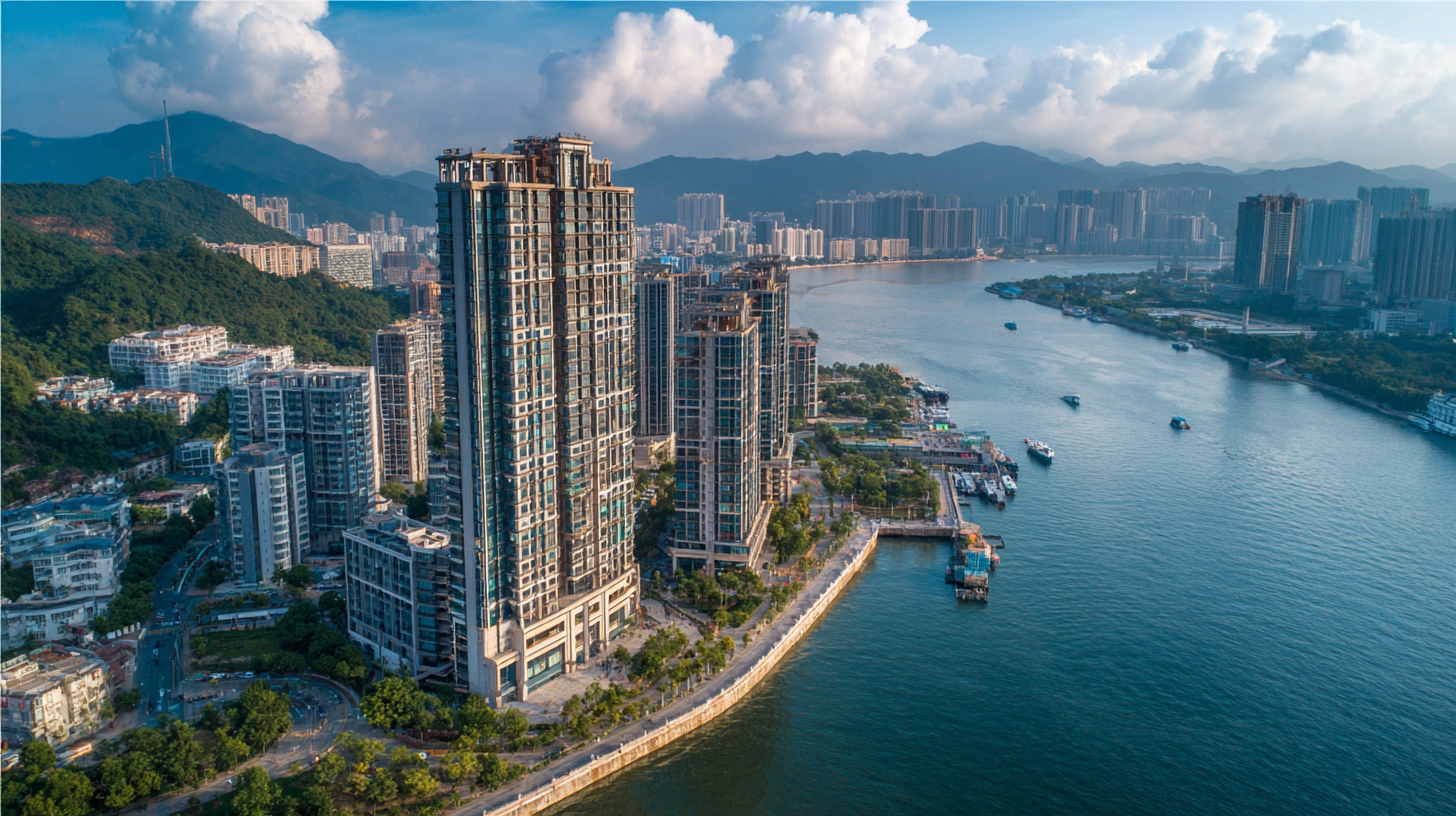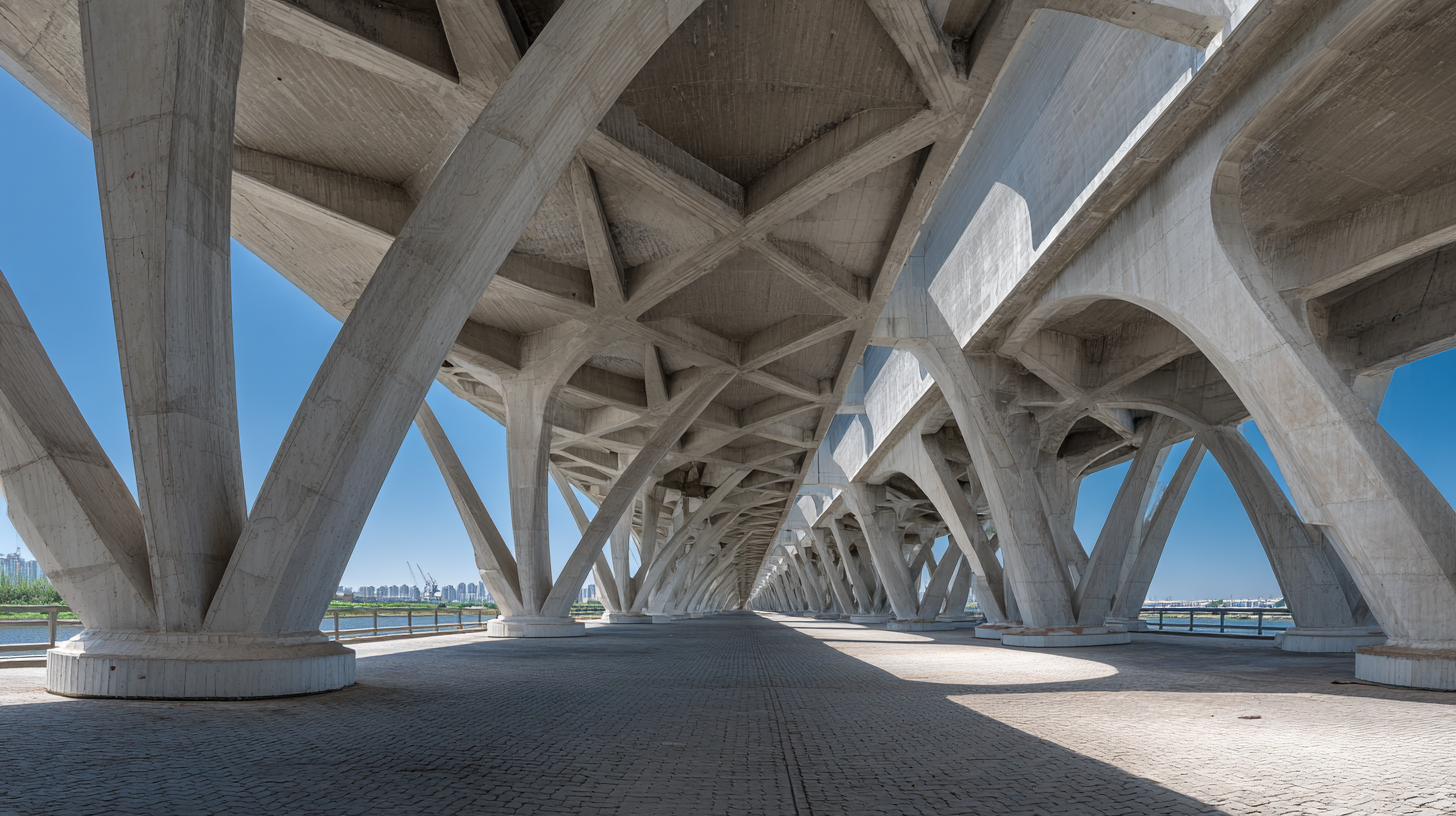
Exploring the Future of Best Polypropylene Concrete Innovations and How to Leverage Them by 2025
As we venture into a new era of construction and materials science, the exploration of innovative solutions such as Polypropylene Concrete is not just timely but essential. This composite material, renowned for its superior strength and durability, is opening doors to a multitude of applications across various sectors. By 2025, we anticipate significant advancements in the use of Polypropylene Concrete that will revolutionize traditional building practices and enhance the longevity of infrastructure. This blog aims to delve into the latest innovations in Polypropylene Concrete, examining how industry leaders are leveraging these breakthroughs to address challenges and improve performance. From reducing environmental impacts to increasing structural resilience, understanding these developments will equip stakeholders with the knowledge needed to embrace the future of construction. Join us as we explore the potential of Polypropylene Concrete and its transformative impact on the industry.

Emerging Trends in Polypropylene Concrete for Sustainable Construction
The construction industry is currently witnessing a significant shift towards sustainable practices, with polypropylene concrete emerging as a leading solution. Recent studies indicate that conventional concrete production contributes approximately 8% of global carbon emissions. In contrast, polypropylene fiber-infused concrete can enhance strength and flexibility while reducing the overall cement content required, thus lowering the environmental footprint. A report by Research and Markets (2023) estimates that the global market for polypropylene fibers is projected to reach $1.48 billion by 2025, highlighting the growing interest in innovative concrete solutions.
Moreover, the benefits of polypropylene concrete extend beyond sustainability. According to a 2023 report by the International Journal of Concrete Engineering, the incorporation of polypropylene fibers can improve the ductility and impact resistance of concrete, making it an ideal option for high-performance structures. As urbanization accelerates and the demand for durable infrastructure increases, leveraging the unique properties of polypropylene concrete will become crucial. By prioritizing these emerging trends, the construction industry can not only reduce its carbon footprint but also enhance the longevity and resilience of modern buildings.
Emerging Trends in Polypropylene Concrete Innovations (2023-2025)
This bar chart illustrates the expected percentage of innovations in polypropylene concrete from 2023 to 2025. As shown, there is a significant increase in the adoption of new technologies and improvements in this sustainable construction material over the years.
Innovative Techniques in Polypropylene Reinforcement: A 2025 Perspective
The future of polypropylene reinforcement in concrete is rife with innovative techniques that are set to revolutionize construction practices by 2025. One of the standout approaches gaining traction is the integration of advanced polypropylene fibers, which significantly enhance the tensile strength and durability of concrete structures. These fibers disperse uniformly within the concrete matrix, minimizing the formation of cracks and prolonging the lifespan of the material, making it a go-to choice for both residential and commercial projects.
 Moreover, ongoing research into the optimal mix designs for polypropylene-reinforced concrete is unlocking new potential applications. For example, the development of special additives that improve the bonding between fibers and the concrete matrix is paving the way for lighter, more robust structures that can withstand extreme weather conditions and heavy loads. As the construction industry increasingly embraces sustainable practices, the recyclability of polypropylene materials will also play a crucial role in driving their adoption.
Moreover, ongoing research into the optimal mix designs for polypropylene-reinforced concrete is unlocking new potential applications. For example, the development of special additives that improve the bonding between fibers and the concrete matrix is paving the way for lighter, more robust structures that can withstand extreme weather conditions and heavy loads. As the construction industry increasingly embraces sustainable practices, the recyclability of polypropylene materials will also play a crucial role in driving their adoption.
By leveraging these innovative techniques, industry stakeholders can not only enhance the performance of their concrete but also contribute to a more sustainable future.
The Role of Digital Technologies in Enhancing Polypropylene Concrete Applications
The rapid advancements in digital technologies are poised to significantly enhance the applications of polypropylene concrete, a material known for its durability and flexibility. As we approach 2025, innovations such as artificial intelligence, machine learning, and IoT are beginning to transform how we design and utilize polypropylene concrete. These technologies enable real-time data monitoring, ensuring that the concrete’s performance can be analyzed and optimized throughout its lifecycle, from mixing to application.
Moreover, digital tools can facilitate improved project management and execution. By utilizing Building Information Modeling (BIM) and other digital platforms, engineers and architects can simulate the use of polypropylene concrete in various environments, predicting outcomes and preventing potential issues before they arise. This proactive approach not only enhances the efficiency of construction processes but also ensures that the unique properties of polypropylene concrete are fully leveraged, leading to innovations in infrastructure that are more resilient to environmental challenges. As these digital technologies continue to evolve, they will undoubtedly play a crucial role in the future of construction, ushering in a new era for polypropylene concrete applications.
Case Studies: Successful Implementations of Polypropylene Concrete Innovations
Polypropylene concrete innovations are rapidly gaining traction in the construction industry, with several successful case studies showcasing their effectiveness. One notable example is a recent infrastructure project in a coastal city that utilized polypropylene fibers to enhance the durability of concrete used in roadways. The incorporation of these fibers significantly reduced cracking and increased resistance to degradation from water exposure, showcasing the material's potential in extreme weather conditions. The project not only improved the longevity of the roads but also reduced long-term maintenance costs.

Another compelling case study comes from a commercial building project where polypropylene concrete was employed to create lightweight yet strong precast elements. This innovative approach not only expedited the construction process but also minimized the energy required for transport due to reduced weight. Additionally, the use of polypropylene fibers contributed to the overall structural integrity of the building, ensuring it met high-performance standards while supporting sustainability goals. These examples highlight how leveraging polypropylene innovations can lead to enhanced performance, cost savings, and environmental benefits in modern construction.
Future Challenges and Opportunities in Polypropylene Concrete Development
The exploration of polypropylene concrete innovations opens up a myriad of opportunities while also presenting several challenges. As the construction industry increasingly seeks sustainable and resilient materials, the integration of polypropylene fibers into concrete promises enhanced durability and crack resistance. However, developers and engineers must navigate issues such as material compatibility and the long-term performance of these composites. Addressing these challenges requires a collaborative effort among researchers, manufacturers, and field practitioners to ensure that best practices are established and maintained.
**Tip: Consider conducting thorough material testing during the early stages of your projects. This can help identify any compatibility issues and set the foundation for a successful implementation of polypropylene fibers in your concrete mix.**
Looking ahead to 2025, the demand for innovative solutions will drive the evolution of polypropylene concrete. Companies must adapt to the shifting market trends while rigorously evaluating the environmental impact of their products. This presents a unique opportunity to position themselves as leaders in sustainable construction practices. Additionally, embracing advanced technologies such as artificial intelligence and data analytics can facilitate smarter design processes and material optimization.
**Tip: Stay updated with the latest research and case studies related to polypropylene concrete to identify successful applications and develop strategies that enhance your competitive edge in the industry.**
Exploring the Future of Best Polypropylene Concrete Innovations and How to Leverage Them by 2025 - Future Challenges and Opportunities in Polypropylene Concrete Development
| Innovation | Description | Potential Benefits | Challenges | Future Opportunities |
|---|---|---|---|---|
| Improved Mixing Techniques | Utilizing advanced mechanical mixers to enhance the distribution of polypropylene fibers. | Increased strength and durability of concrete structures. | High initial investment in advanced mixing equipment. | Wider adoption in commercial construction projects. |
| Smart Polypropylene Fibers | Fibers embedded with sensors to monitor structural health. | Real-time data on crack formation and load distribution. | Complex integration with existing monitoring systems. | Research collaborations for smarter infrastructure. |
| Recycled Polypropylene | Using recycled polypropylene materials to reduce waste in concrete. | Environmental benefits and cost reductions. | Quality control and consistency of recycled materials. | Emerging markets for green construction materials. |
| 3D Printing with Polypropylene Concrete | Innovative use of 3D printing technology in concrete applications. | Customization and reduced construction times. | Technical challenges in large-scale implementations. | Adoption in modular construction and prefabrication. |
| Self-Healing Concrete | Concrete that can repair its own cracks through chemical processes. | Extended lifespan and reduced maintenance costs. | High research and development costs. | Significant impact on infrastructure longevity. |



